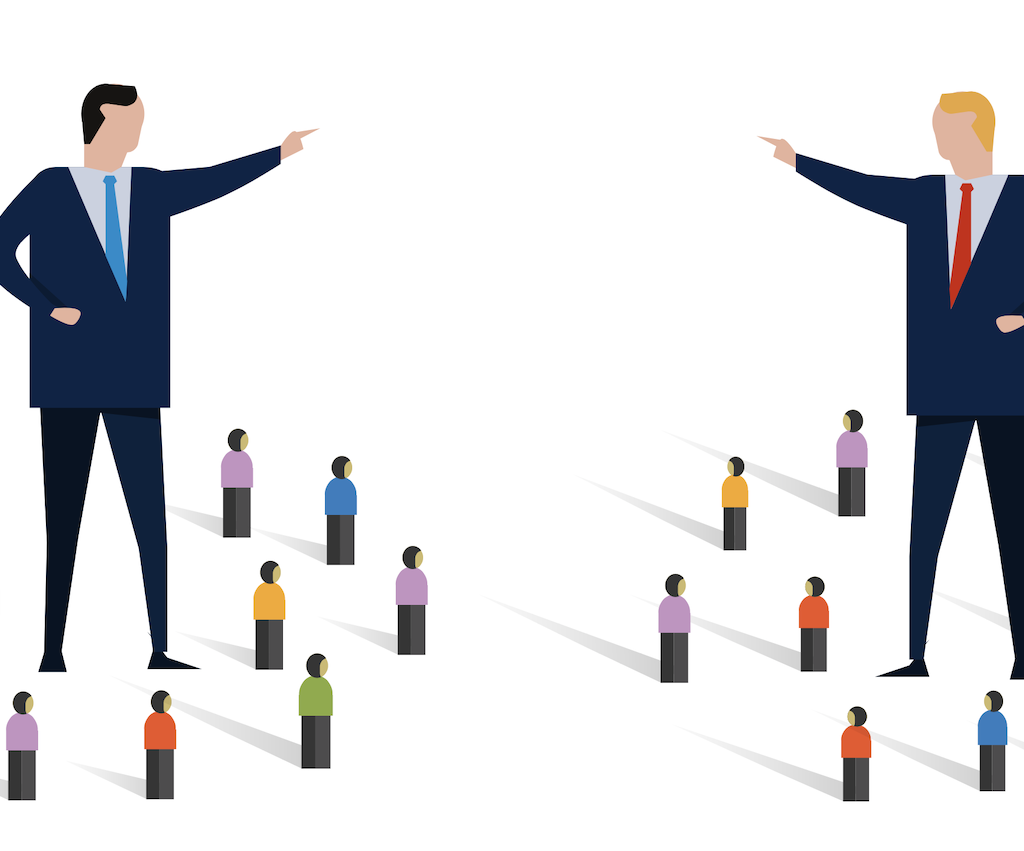Political Polarization and Partisanship
Political polarization and partisanship: This topic examines the growing divide between political parties and ideologies, including the role of media and social media in fueling polarization, and the potential effects on democracy and governance.
Political polarization and partisanship have become increasingly salient issues in recent years. As political parties and ideologies have become more ideologically divided, the ability to compromise and work together has become increasingly difficult.
In this essay, we will examine the growing divide between political parties and ideologies, the role of media and social media in fueling polarization, and the potential effects on democracy and governance.

Political polarization refers to the growing divide between political parties and ideologies.
As parties and ideologies become more ideologically divided, the ability to compromise and work together becomes increasingly difficult.
This has led to gridlock in government and a breakdown in the ability to make policy decisions. Political polarization is not a new phenomenon, but it has become more pronounced in recent years, with both major political parties becoming increasingly ideologically homogeneous.
Partisanship refers to loyalty also the support of political parties. Partisan loyalty has become more entrenched in recent years, with many voters identifying strongly with their political party and also viewing the other party as a threat to their values and beliefs.
Partisanship has become increasingly important in political discourse, with many politicians emphasizing partisan loyalty over compromise and cooperation.
The impact of media and social media on polarization is a contentious topic in political debates on partisanship and division. Media outlets and social media platforms now cater to individuals’ confirmation bias, reinforcing their preexisting beliefs and values.
Echo chambers have formed, where individuals encounter information solely aligned with their worldview, without exposure to opposing viewpoints.
The consequence is heightened political polarization, as people grow more entrenched in their beliefs and also less open to alternative perspectives.
Social media has played a particularly significant role in fueling political polarization. Facebook and Twitter serve as vital platforms for political news, and information, also connecting like-minded individuals.
Filter bubbles form, exposing individuals to information that aligns with their beliefs while excluding opposing viewpoints.
The result has been an increase in the intensity of political polarization. Individuals becoming more entrenched in their beliefs and less willing to consider alternative perspectives.
The effects of political polarization and partisanship on democracy and governance are potentially significant. As political parties also ideologies become more ideologically divided, the ability to compromise and work together becomes increasingly difficult.
This has led to gridlock in government and a breakdown in the ability to make policy decisions. The result has been a decline in public trust in government.
As citizens become increasingly frustrated with the inability of the government to address the challenges facing the nation.
The effects of political polarization and partisanship on democracy and governance are potentially significant. As political parties also ideologies become more ideologically divided, the ability to compromise and work together becomes increasingly difficult.
This has led to gridlock in government and a breakdown in the ability to make policy decisions. The result has been a decline in public trust in government. As citizens become increasingly frustrated with the inability of the government to address the challenges facing the nation.
There are several potential solutions to political polarization and partisanship. One approach is to increase opportunities for bipartisan cooperation also compromise. This might involve the creation of bipartisan commissions or the adoption of rules that require bipartisanship in certain policy areas.
Another approach is to increase the diversity of media sources and reduce the influence of filter bubbles. This might involve increasing funding for public broadcasting or creating incentives for media outlets to provide balanced also objective coverage. 카지노사이트